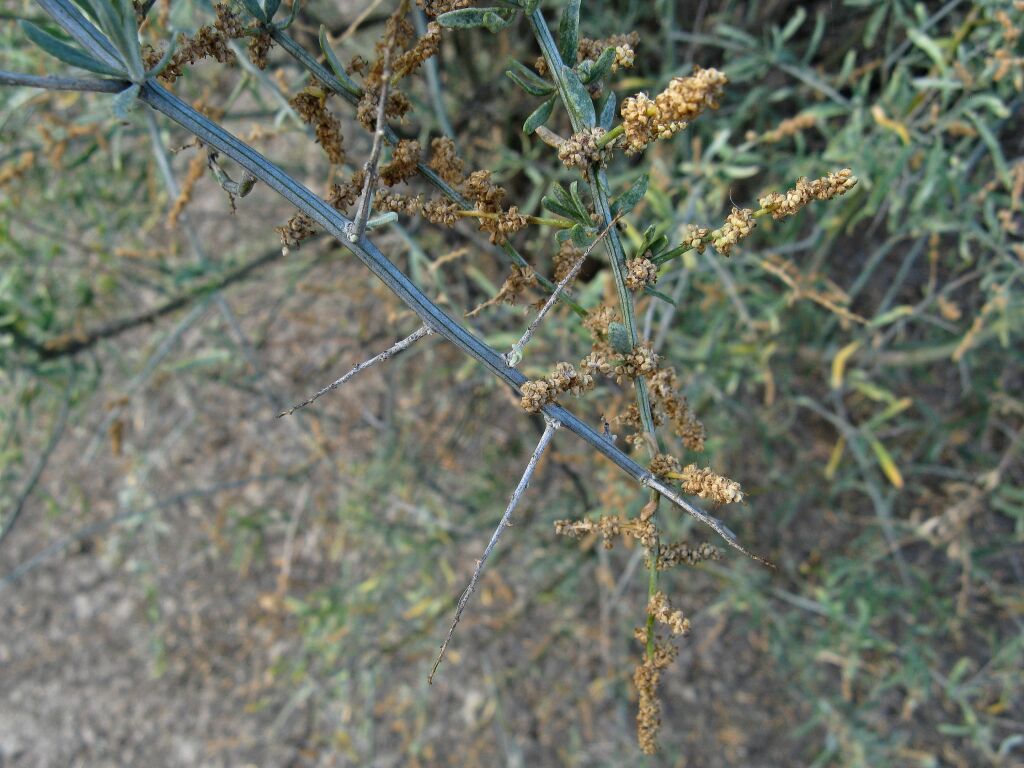Chenopodium nitrariaceum
(F.Muell.) F.Muell. ex Benth. Nitre GoosefootMuch-branched spinescent shrub, to c. 2 m high and wide, often forming hedge-like stands. Leaves alternate, often crowded on short lateral shoots, indistinctly petiolate, oblong to spathulate, 10–30 mm long, 2–6 mm wide, thick-textured, sparsely mealy on lower surface. Flowers male, female or bisexual, in clusters within a terminal panicle or short lateral spikes; tepals 5, fused to about midway, partially covered on outer surface with crooked or branched hollow hairs; stamens 5, free; pericarp membranous, loosely covering seed. Seed horizontal to vertical, dark red-brown to black, 1–1.2 mm diam. Flowers mostly Feb.–Aug.
MuM, Wim, VRiv, MSB, RobP, MuF, GipP, Gold. Also NT, SA, Qld, NSW. Locally common on heavy alluvial soils, chiefly by the Murray River and its associated floodplains, with isolated southerly occurrences near Birchip, Murtoa and Dimboola. .
Walsh, N.G. (1996). Chenopodiaceae. In: Walsh, N.G.; Entwisle, T.J., Flora of Victoria Vol. 3, Dicotyledons Winteraceae to Myrtaceae, pp. 129–199. Inkata Press, Melbourne.
 Spinning
Spinning



